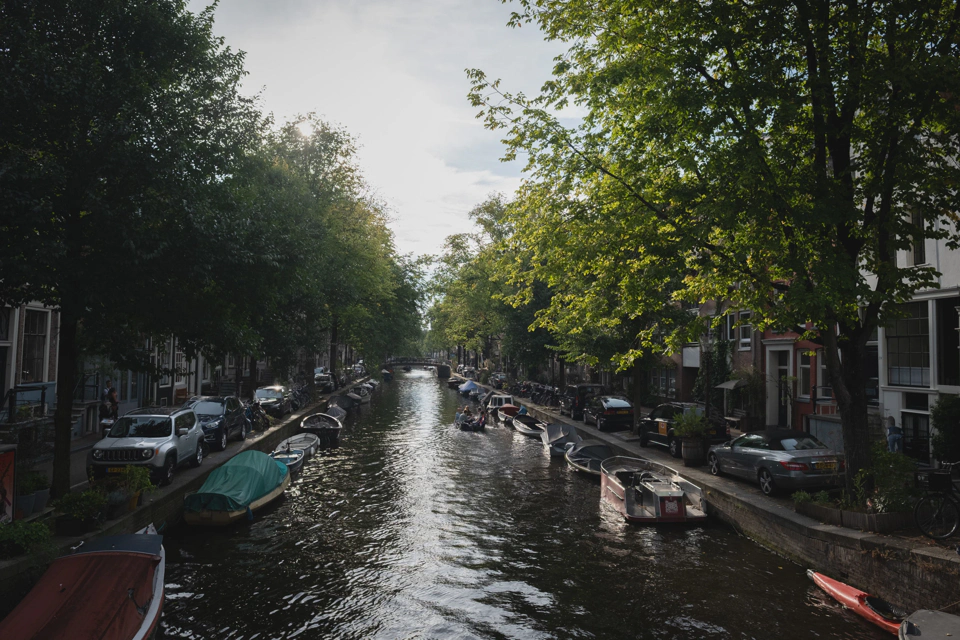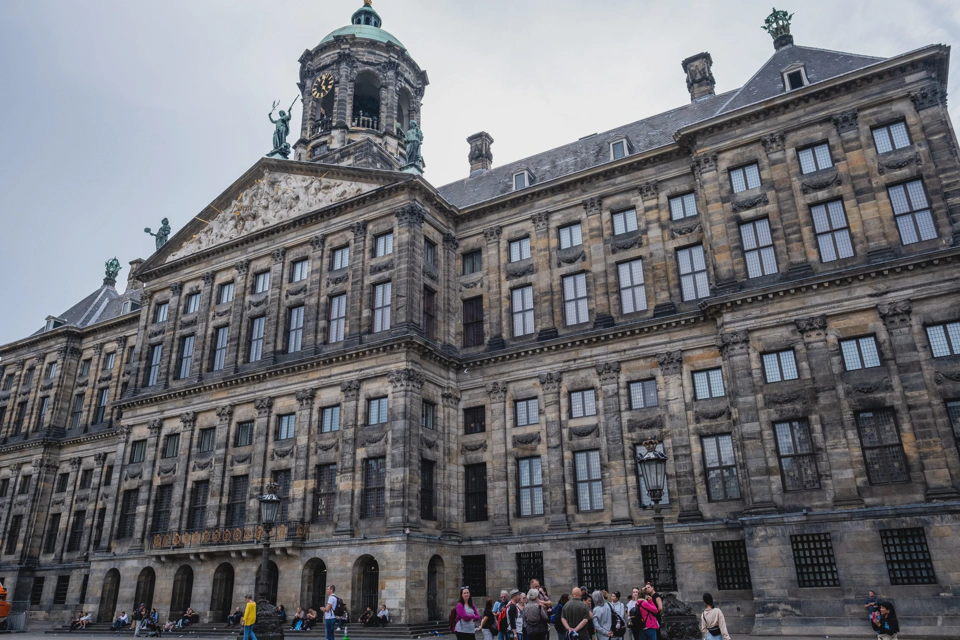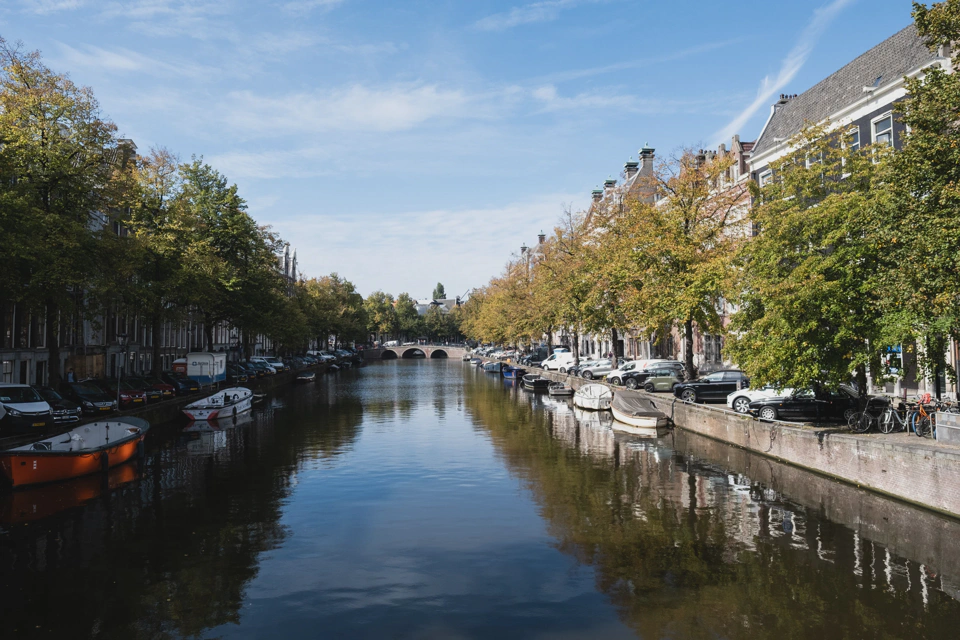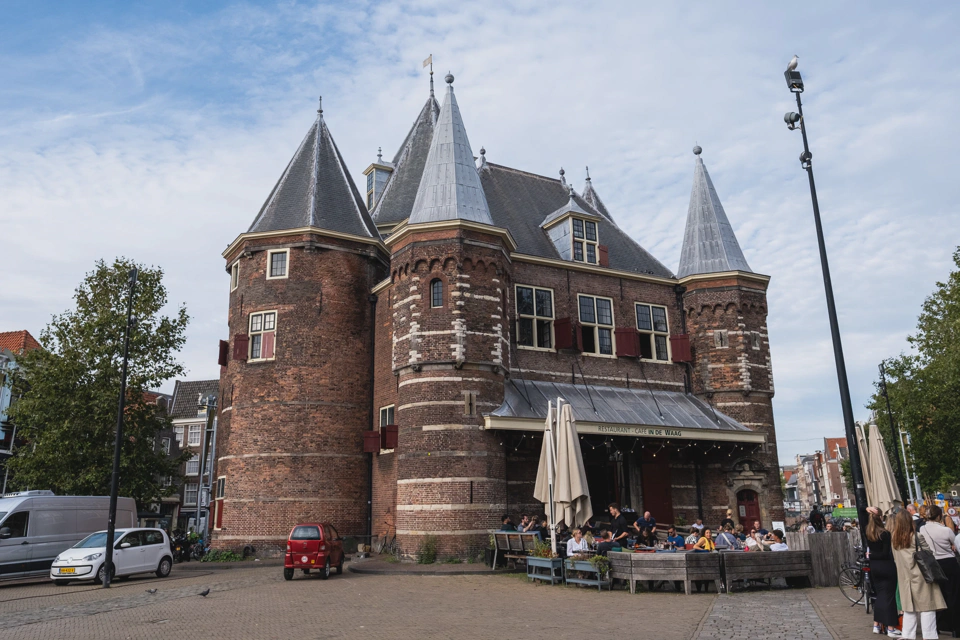After Arnhem, we set our eyes on Amsterdam. I visited it in 2012 for just a few hours, but it was during our move to the US and it was cloudy so I basically remembered four things of the city: a druidic bike, a colorful bench, and bikes and canals everywhere. This time we would have more time and fewer mental distractions.
We first visited the Rijksmuseum for several hours. When we were done we walked to the central station to our hotel in the outskirts of the city, leave our backpacks and rest. On the long walk to the station we passed by various points of interest but I was tired and it was crowded so nothing caught my attention.
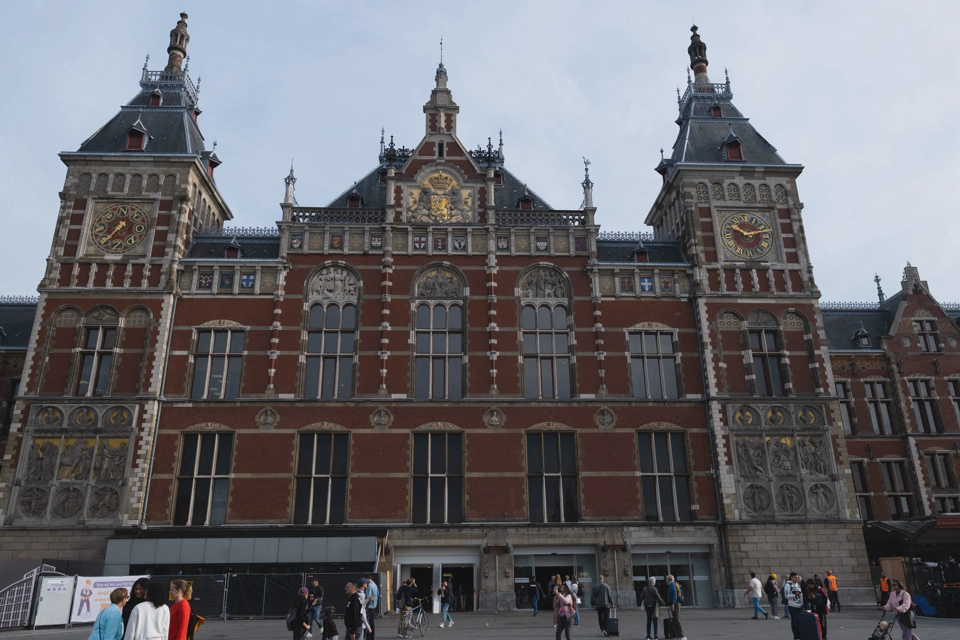
We had booked a room at a hotel that Loes found that was built with recycled materials. I had never been to this type of place so when we arrived and I lay in bed, the tire tracks stains on the ceiling left an impression. I loved how they combined recycled materials with a modern look, and even though our room wasn’t perfect, the next morning I would learn that the breakfast buffet they had was, indeed perfect.
After resting for a bit we left the hotel and looked for a place to have dinner. We chose a Mexican restaurant that was next door to an Indonesian restaurant and we had a veggie burrito and a veggie burger sitting on the street watching the incessant home delivery scooter hustle and the small pier on the other side of the street.
After dinner, we walked along a promenade in front of our hotel. When you’re inside a twelve-floor hotel or walking along a promenade, you don’t realize it, but the whole neighborhood is reclaimed land and consists of seven artificial islands that started construction in 1999 and house about 18,000 people.
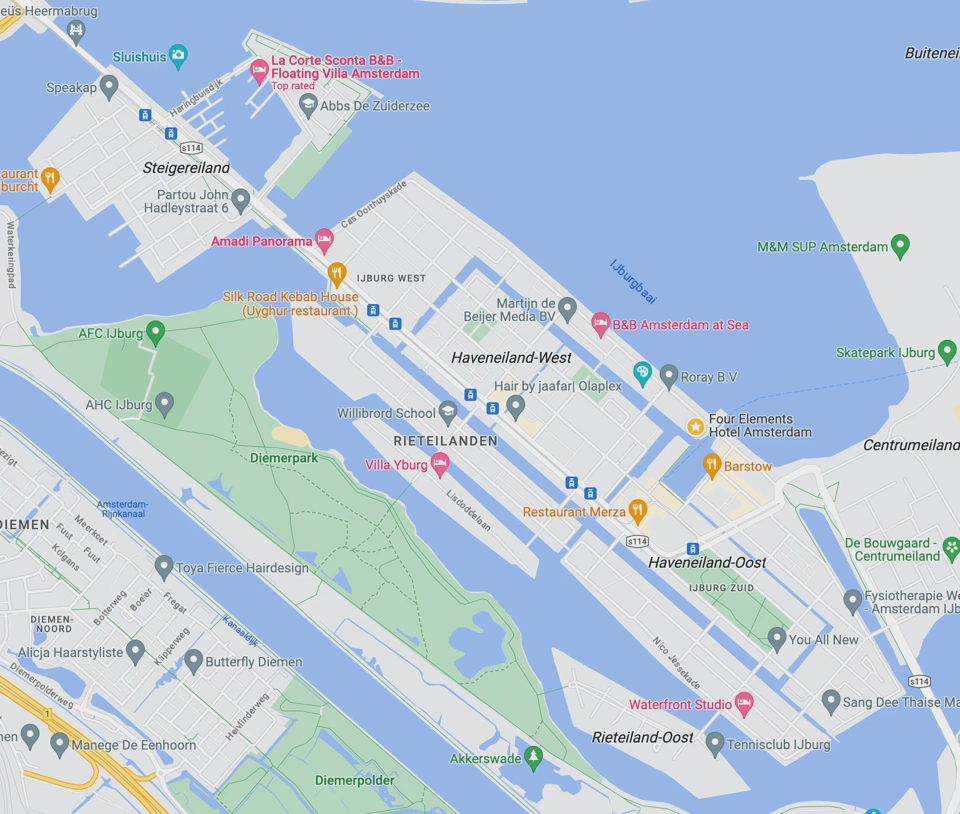
Some of the houses we saw looked very modern and slick, with floor-to-ceiling windows, minimalist kitchens and interesting interiors. I read later that the local government had given free rein to home builders to do whatever they wanted in certain zones, and it shows.
The area felt quiet and peaceful and the lake views from the houses must be relaxing.

The next day we visited the city archives where we enjoyed an exposition about eight Surinamese families used as a thread to raise awareness of Dutch colonialism, slavery, and the exploitation of Suriname people. I find it hard to sit and meditate for one hour, but personal stories about people who lived hundreds of years ago grip my attention instantly. We are wired for stories.
After the exposition, we found stairs leading into the basement and took them. There we were welcomed by vault doors leading into the archives which made us realize that the building had been a bank.

The archive contained tens of thousands of digitized documents with many beautiful black and white photographs hanging on the walls of the stunning blue, yellow, and white mosaics entrance hall. The only thing that can top this is visiting Fort Knox.
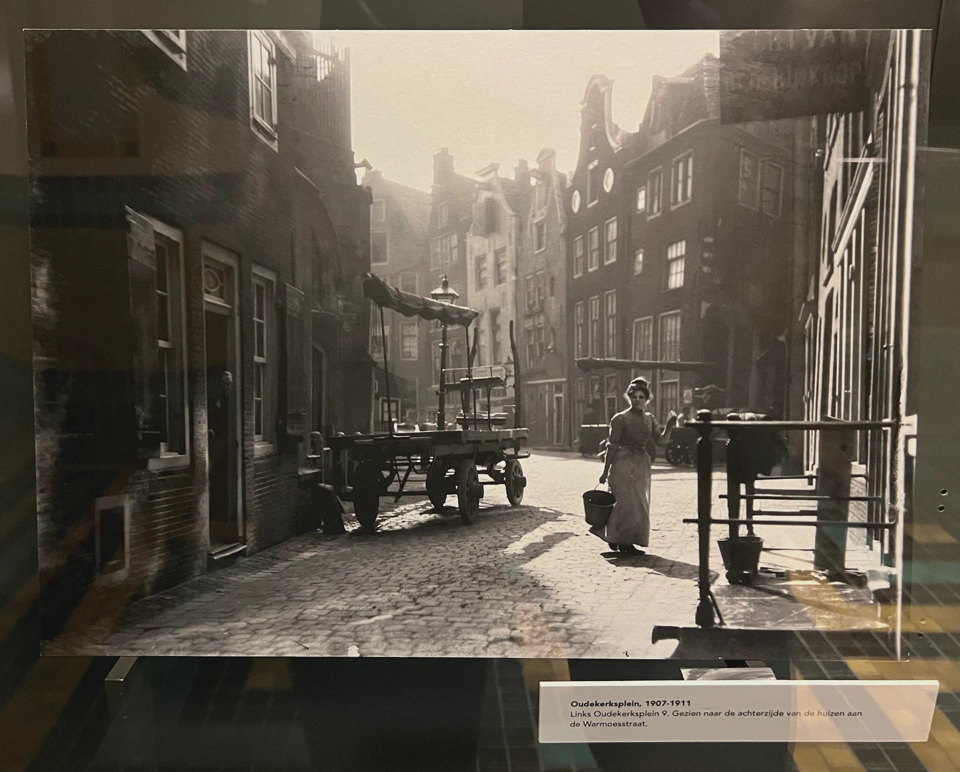
Most of the Amsterdam neighborhoods we visited were brimming with tourists. In the boat I spotted at least three nationalities including a noisy Arabic-speaking family behind us, and two Dutch women and two teenager girls with looks of “I feel bored about my existence but I’m very elegant and distinguished which is something.” One of the teenagers tried to leave her sandwich trash in the boat on her way out but failed. And of course, there was a Spaniard tourist with a camera hanging around his neck that screamed “I’m a tourist” and who wore a tattered grey Icebreaker t-shirt that was at least seven years old. Tourists…
For the rest of the day and the next day we walked randomly through the city, loosely following sights I had marked on Google Maps. We saw passive-aggressive window stickers, designer microcars, canals and bicycles everywhere. We saw floating houses on the canals. We passed by a flower market, we had terrible and overpriced paninis for lunch, ice-creams of varying quality, and tasty pizzas for dinner. We visited one of the many cheese shops and tried combinations of cheese flavored with all sorts of things. We saw niche stores like one where they only sold bathroom rubber ducks. We passed by green streets where nature seemed to be slowly taking hold of the sidewalks and facades. We saw dirt. I’ve seen city dirt before, but I don’t remember seeing toothbrushes, combs, and batteries on the floor. We smelled marihuana regularly during the two days we were in Amsterdam. We entered more than one shop where the clerks didn’t speak Dutch, which understandably gained Loes’s disapproval.
I tried to think of what it would be like to live in this city but I had a hard time because it felt very different than every other city I’ve lived in: canals with so many trees, low raise centuries-old slanted colorful buildings, overflowing amounts of people, bicycles everywhere.
In the morning of our last day in Amsterdam, we talked to two young Eastern European women who had been there for a few years and told us that they find the city center chaotic and stressful because of the never-ending waves of tourists. They also talked about the large number of bike accidents and the real need to have bike insurance.
I haven’t lived in a big city for many years. the sensation I have when visiting one and seeing the broad range of human behavior, some of the scenes I saw felt dehumanizing.
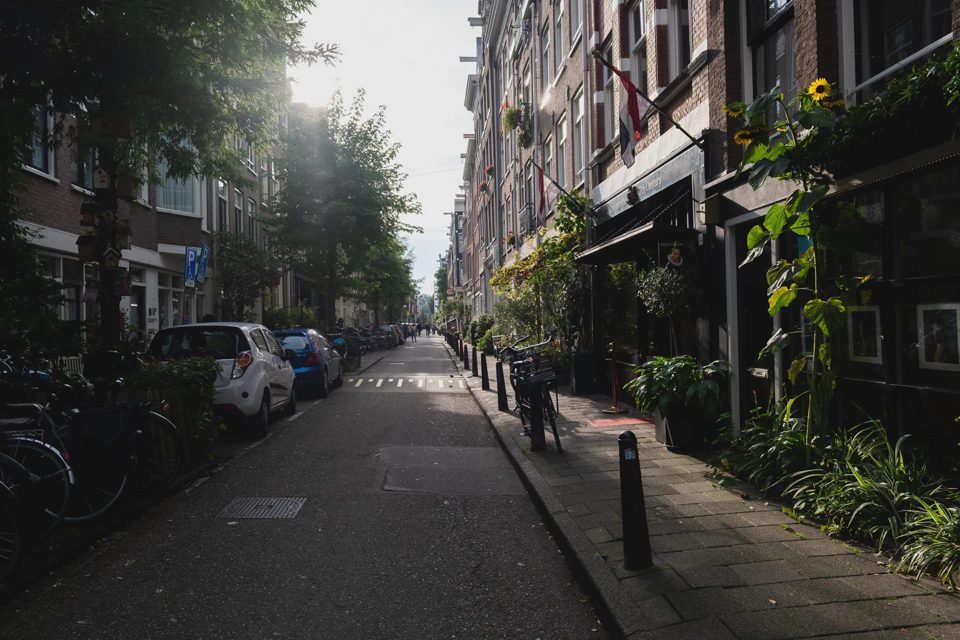
After this trip I feel I know a little bit more about Amsterdam, but, like I experienced with Japan, I leave with more curiosity than when I arrived.
